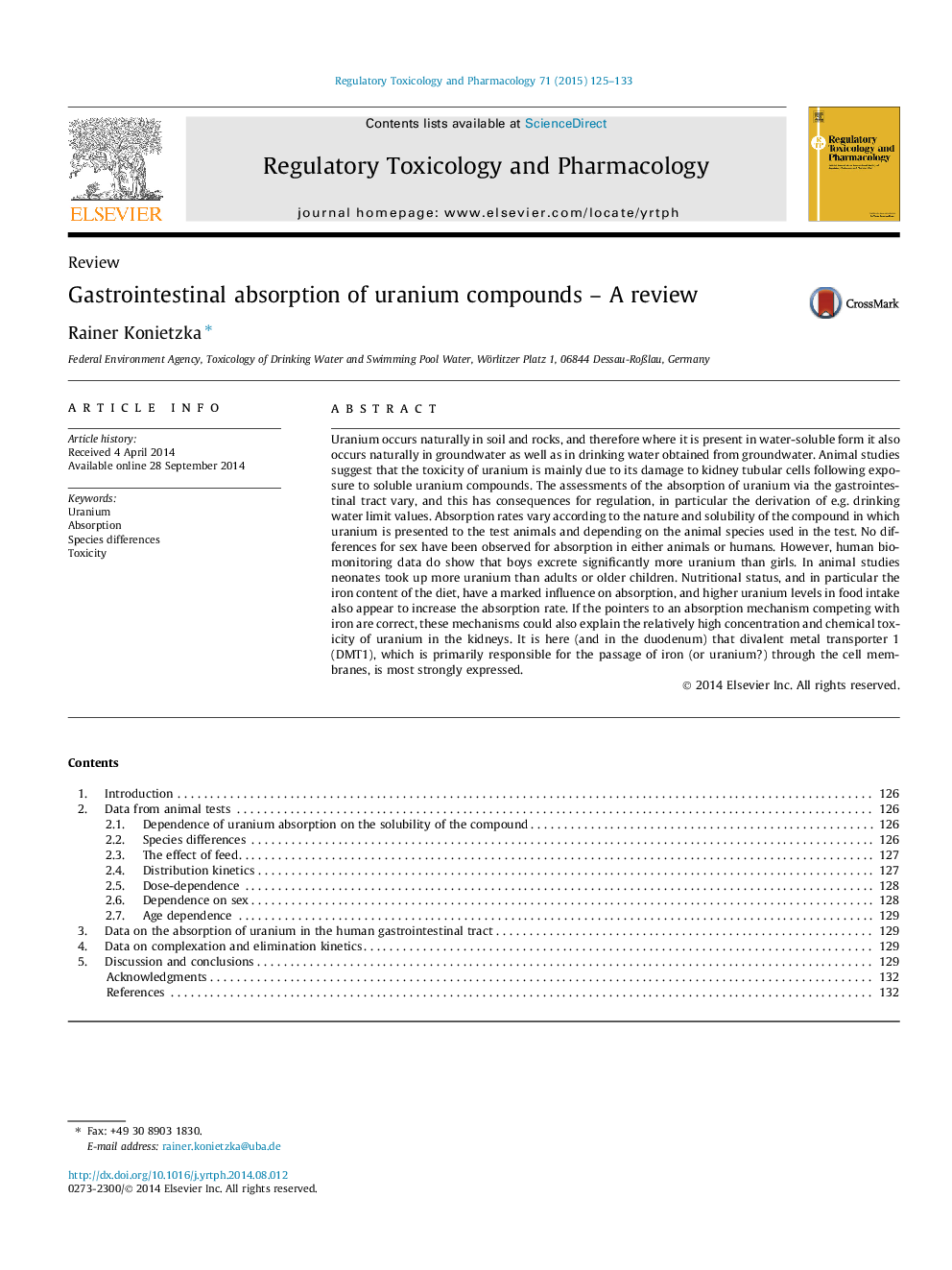| کد مقاله | کد نشریه | سال انتشار | مقاله انگلیسی | نسخه تمام متن |
|---|---|---|---|---|
| 5856640 | 1131979 | 2015 | 9 صفحه PDF | دانلود رایگان |

- Uranium absorption rates vary according to the solubility of the compounds.
- Nutritional status has a marked influence on absorption.
- In animal studies neonates took up more uranium than adults or older children.
- A hypothetical absorption mechanism by divalent metal transporter 1 is discussed.
- The assessment of uranium absorption may be relevant for derivation of limit values.
Uranium occurs naturally in soil and rocks, and therefore where it is present in water-soluble form it also occurs naturally in groundwater as well as in drinking water obtained from groundwater. Animal studies suggest that the toxicity of uranium is mainly due to its damage to kidney tubular cells following exposure to soluble uranium compounds. The assessments of the absorption of uranium via the gastrointestinal tract vary, and this has consequences for regulation, in particular the derivation of e.g. drinking water limit values. Absorption rates vary according to the nature and solubility of the compound in which uranium is presented to the test animals and depending on the animal species used in the test. No differences for sex have been observed for absorption in either animals or humans. However, human biomonitoring data do show that boys excrete significantly more uranium than girls. In animal studies neonates took up more uranium than adults or older children. Nutritional status, and in particular the iron content of the diet, have a marked influence on absorption, and higher uranium levels in food intake also appear to increase the absorption rate. If the pointers to an absorption mechanism competing with iron are correct, these mechanisms could also explain the relatively high concentration and chemical toxicity of uranium in the kidneys. It is here (and in the duodenum) that divalent metal transporter 1 (DMT1), which is primarily responsible for the passage of iron (or uranium?) through the cell membranes, is most strongly expressed.
Journal: Regulatory Toxicology and Pharmacology - Volume 71, Issue 1, February 2015, Pages 125-133